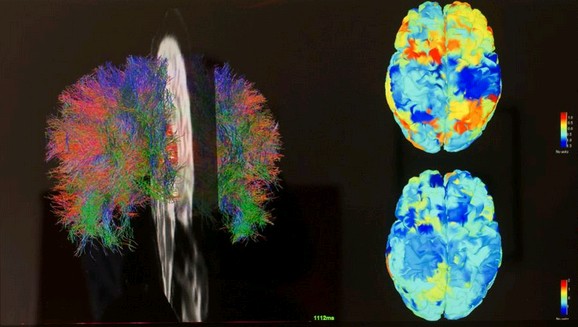Brain Knowledge from the Field of Master Mind Science (MMSCI)
Shared from the lab of: Joseph Mercado
Content Contributor: Karisa Endelmann (Facebook)
Article Author: David DiSalvo – Forbes
To: Science Lover
Blog Post #862
Re: Brain Circuits Behind Moods
Date and Time: Tuesday, December 17, 2019 at 4:54 p.m.
Dear Science Lover,
The largest brain imaging study of its kind may have found the reason why people with anxiety and mood disorders so often feel unable to escape negative thoughts and emotions.
Researchers analyzed a trove of brain scans–more than 9,000 from 226 previous functional imaging studies–that compared the brain activity of healthy adults to those diagnosed with mood or anxiety disorders.
Analysis across the studies found abnormally low activity in brain regions responsible for stopping thoughts and shifting to new ones, referred to in the research as “cognitive control,” and hyperactivity in other brain regions that “process emotional thoughts and feelings.”
Brain areas that showed abnormally low activity included the inferior prefrontal and parietal cortex, the insula and the putamen, which collectively form a brain circuit that influences control over thoughts and emotions. Brain areas showing hyperactivity included the left amygdala, seat of the fight or flight response.
Taken together, these findings suggest that the brains of patients with anxiety and mood disorders are stuck in an unhealthy hotbox: on one side their brains have difficulty managing emotionally charged thoughts, and on the other they’re prone to rumination and negative emotions.
“These brain imaging findings provide a science-based explanation as to why patients with mood and anxiety disorders seem to be ‘locked in’ to negative mood states,” said Dr. Sophia Frangou, senior study author and a psychiatry professor at The University of British Columbia. “They also corroborate the patients’ experience of being unable to stop and switch away from negative thoughts and feelings.”
Mood and anxiety disorders in the study included major depressive disorder, bipolar disorder, post-traumatic stress disorder and several anxiety disorders. One in five adults in the U.S., roughly 50 million people, experience these disorders in any given year.
The researchers noted that the study intentionally excluded brain imaging from children and older adults, so it’s not possible to know how the results would apply to those age groups. And since interpreting brain scans relies largely on correlation, the results do not show cause and effect, nor answer the “chicken and egg” questions about whether brain abnormalities exist prior to, or are a consequence of, other factors like behavioral and environmental influences.
Future studies, the researchers said, will evaluate ways of focusing on the brain circuits featured in the findings, potentially with interventions like neurostimulation and targeted therapy.
“These shared brain phenotypes have the potential to serve as targets for interventions aiming to improve clinical outcomes and reduce or prevent affective morbidity in the general population,” they wrote.
About the Author:
David DiSalvo is the author of the best-selling book “What Makes Your Brain Happy and Why You Should Do the Opposite”, which has been published in 15 languages, and the books “Brain Changer: How Harnessing Your Brain’s Power to Adapt Can Change Your Life” and “The Brain in Your Kitchen”.
His work has appeared in Scientific American Mind, Forbes, Time, Psychology Today, The Wall Street Journal, Slate, Esquire, Mental Floss and other publications, and he’s the writer behind the widely read science and technology blogs “Neuropsyched” at Forbes and “Neuronarrative” at Psychology Today.
He can be found on Twitter @neuronarrative and at his website, daviddisalvo.org. Contact him at: disalvowrites [at] gmail.com.
Content Source: Forbes.com

Email Us a Message

Please send us an email message below and we will serve you with an answer momentarily.




